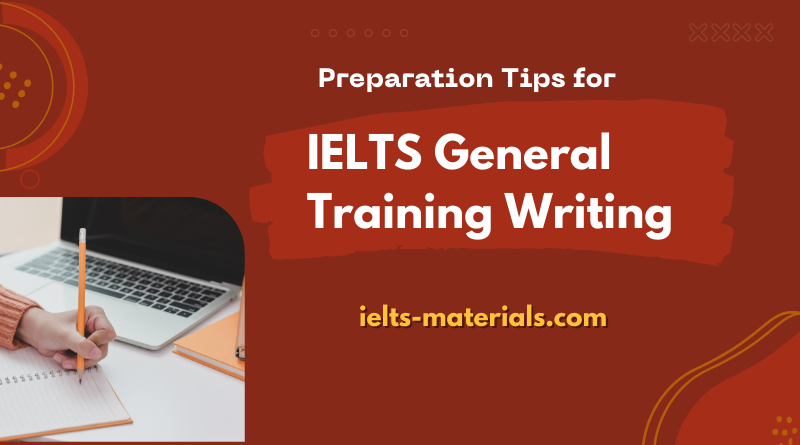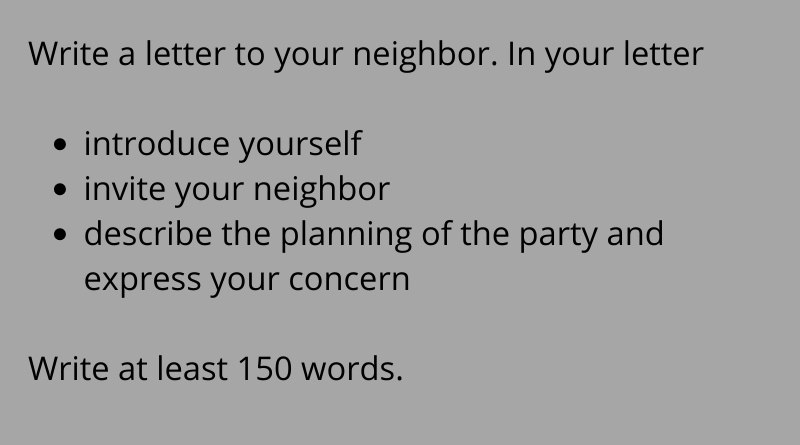
Table of Contents
Introduction:
The GT writing test is different from the Academic test if you wish to take it. As in the Academic module, you have one hour to complete two tasks of 150 and 250 words each. Task 1 is always a letter, but Task 2 is an essay on a specific topic.
Task 1:
Letters are a valuable means of communication. In General Training Writing Task 1, you’ll be given a scenario and judged on your ability to write a letter suitably to attain a specific goal. You must provide all relevant data so that the reader can grasp your message and the objective of your letter is apparent.
On the question paper, the task will present you with a predicament. You must write in the first person and put yourself in the specified situation. Remember that a letter is a method of communication, and you must keep it as simple as possible. Whether formal or semi-formal, notes are always written with a specific aim in mind.
Getting the required IELTS score is simple when you put in the effort. We’ve compiled a list of helpful hints to help you get started. With the assistance of our IELTS Experts, we have compiled a list of key points to consider when writing a letter as part of IELTS General Training Writing Task 1.
When we look at task achievement in the IELTS assessment criteria, we can see that the examiner looks to see if your letter includes the following features:
- Right purpose of the letter.
- The right tone of the letter.
- The bullet points are presented, highlighted, and expanded upon.
- The format is appropriate – it is in the form of a letter.
That’s a high-level overview, but let’s dig deeper into what each of these dot points means and how you should write your letter in IELTS Writing Task 1.
Declare the goal
Begin your letter by clearly stating why you are writing or the purpose of your letter. The reason for writing your letter should be stated clearly in the first paragraph. Make certain that the letter’s purpose is directly related to the situation described in the question.
Following are some examples of opening paragraphs with a clear purpose:
| Formal Letter | Informal Letter |
| Dear Sir/Madam, | Dear Aman |
| I am writing this letter to inform you about | I hope you’ve completed your study. |
| I am thankful to the company for sending me to Canada. |
Use the appropriate tone
Let’s have a look at the following section of your letter where the examiner is looking for information: tone. The letter’s tone relates to the professional or informal style in which it is written. You’ll get a hint from the question’s instructions.
Begin your letter by writing:
| Formal Letter | Informal Letter |
| Dear Sir/Madam, | Dear Aman |
| Formal: written to someone you have never met | Informal or semi-formal: written to a friend, colleague, or acquaintance |
A formal letter includes the following elements:
- Passive language (be + past participle) in longer phrases
- (e.g., the broken door must be repaired so that customers using this facility have adequate visibility of their surroundings.)
An informal letter is:
- Conversational
- Examples are contractions (e.g., can’t) and more direct speaking (e.g., Can you please fix the kitchen light so that I don’t have an accident?).
You can use the following examples of formal and informal terminology and structures in your IELTS General Training Writing Task 1 response:
| Formal Letter | Informal Letter |
|---|---|
| Dear Sir/Madam, | Dear Aman |
| Request | Ask |
| Could | Can |
| Would | Will |
| Cannot | Can’t |
| Yours sincerely/ faithfully | Best wishes/ love |
| Can I suggest | Can I tell you |
| As you described above | As I mentioned before |
Include the bullet points from the question.
It is critical to include the bullet points offered when writing a letter for the IELTS General Training Writing Task 1.
In IELTS General Training Writing Task 1, you will be asked the following question:
- a predicament
- To whom should the letter be addressed?
- What should you include in your letter? (The bullet points).
Each of the three bullet points must be presented. Also, keep in mind that some bullet points have many elements. So keep an eye out for ‘and’ and plurals.
Let’s take a closer look at the following query.

There is no need to write down any addresses.
Begin your letter with the following:
Dear…
Take a look at the first bullet point.
Introduce yourself?
At this point, you have to mention yourself.
Look at the second bullet point and notice that invite your neighbor
At this point, you have to ask your neighbor to your house.
At the last point, you mention the letter’s main point, like how you plan the party, etc.
Create a structure for your letter
The format of your letter is the final item to consider in IELTS General Training, Writing Task 1. A letter must follow a specific format, which includes the following:
A greeting
(Dear Sir/Madam,) Mr. Smith, Mr. John, Mr. Smith, Mr. Smith, Mr. Smith, Mr. Smith
The main portion (consisting of paragraphs for each part of the letter)
Finally (Yours sincerely, yours faithfully, Best wishes, Kind regards, Love)
FAQ
-
How can I score an 8 in the general IELTS writing section?
Step 1: Make sure your response is related to the inquiry.
Step 2: Complete the question in its entirety.
Step 3: Using linking sentences, organize your article rationally with clear progression.
Step 4: Make paragraphs out of your essays.
Step 5: Use uncommon vocabulary and make sure it’s spelled correctly. -
Is it possible for an IELTS paper to be leaked?
Yes, there is a risk that the question paper will be leaked…. . Because the IELTS is not an online exam administered by IDP or the British Council, it is in the hands of the administration of the center where the exam is administered. As a result, there is a risk of information leaking if money is offered.
-
How do I double-check my first writing task?
If you do the following, your score will rise.
· Employ a wide range of vocabulary (useful task 1 vocabulary)
· Make use of vocabulary when presenting accurate data
· Recognize collocations (matching verbs with nouns)
· Avoid spelling errors.
· Don’t use inappropriate or informal language.
